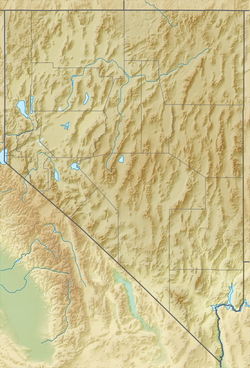| Elko Formation | |
|---|---|
| Stratigraphic range: Mid Eocene (Uintan)-Mid Miocene ~ | |
| Type | Formation |
| Sub-units | Elko Shale |
| Lithology | |
| Primary | Shale |
| Other | Limestone |
| Location | |
| Coordinates | 40°48′N115°48′W / 40.8°N 115.8°W |
| Approximate paleocoordinates | 41°30′N112°54′W / 41.5°N 112.9°W |
| Region | Nevada |
| Country | United States |
| Type section | |
| Named for | Elko County |

Elko Formation
The Elko Formation, also known as Elko Shale(s), is an oil shale geologic formation in Elko County, northern Nevada, United States. The deltaic and lacustrine shales and limestones preserve fossils dating back to the Middle Eocene of the Paleogene to Middle Miocene of the Neogene period. The frog genus Elkobatrachus and ant species Pseudocamponotus elkoanus were named after the formation.

